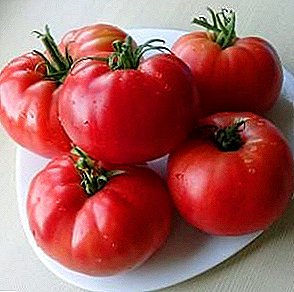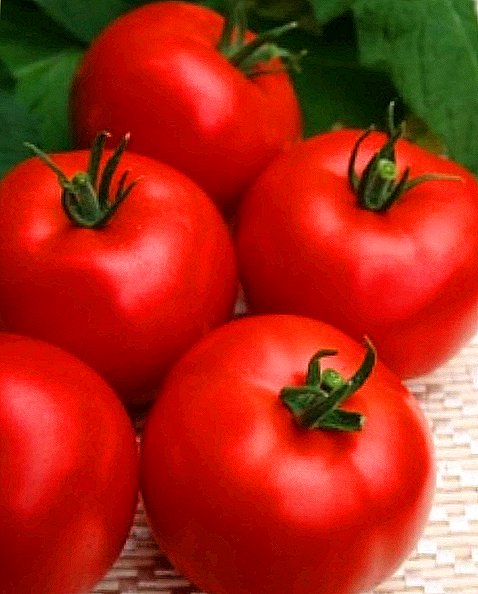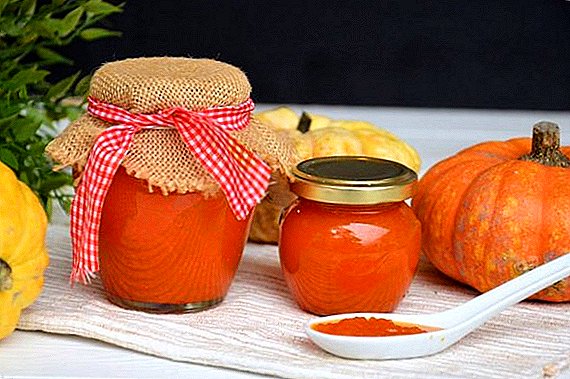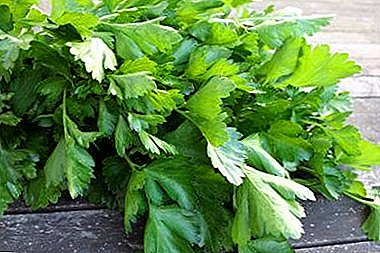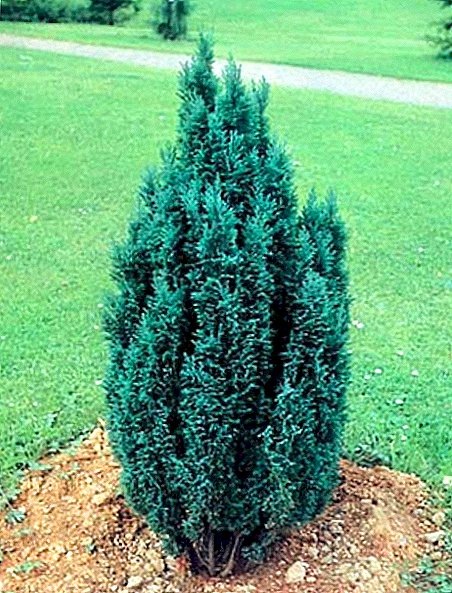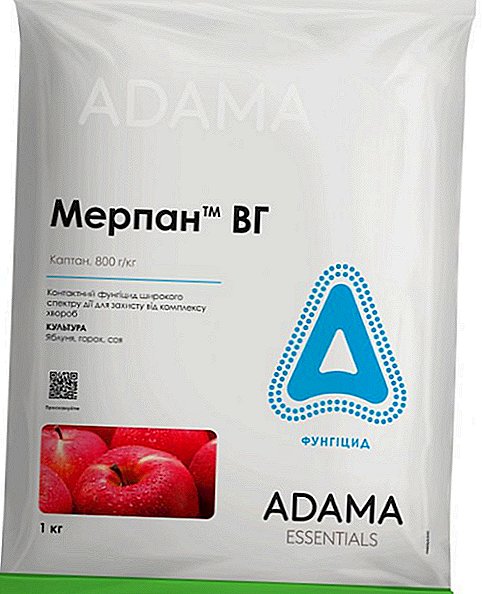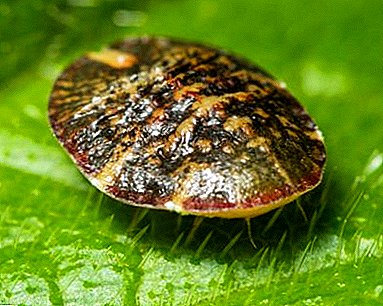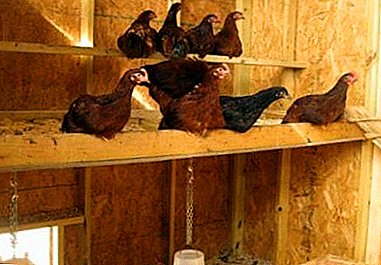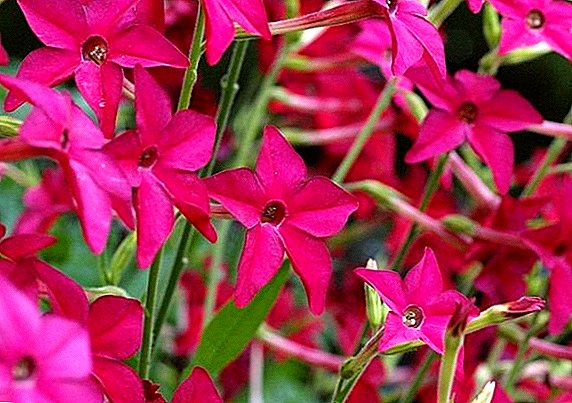 All cultivated plants can not be known. But it happens that somewhere on someone else's flowerbed you will like bright flower baskets with petals, like those of a daisy, but you don’t know how to tell about them in the seed shop.
All cultivated plants can not be known. But it happens that somewhere on someone else's flowerbed you will like bright flower baskets with petals, like those of a daisy, but you don’t know how to tell about them in the seed shop.
To facilitate the search, we offer you a selection of the names of the most popular flowers, similar to daisies, with a detailed description and photos.
Majors
Despite its "military" common name, these herbaceous plants of the genus Compositae characterized by variegated succulent flowers of large sizes and endurance. Depending on the variety, they can be of different tones, simple, semi-double or terry. Thanks to breeders, varieties with low stems (up to 30 cm), medium (up to half a meter) and high (up to 1 m) appeared on the market. 
Did you know? Familiar in the people majors in the State Register are designated as "zinnia". This name flowers received in honor of their discoverer Professor Ivan Tsinna. It was he who from North America brought the seeds of a beautiful plant to Europe.
In the wild, majors form chaotic shrubs with white, pink, red, yellow, purple, maroon and purple flowers. In the cultivated version it is a long-flowering annual that stays fresh in a bouquet for weeks.  In the garden he will be very comfortable in wet areas, where there is warmth and a lot of light. Surprisingly, this flower can withstand any heat and drought, without losing its attractiveness.
In the garden he will be very comfortable in wet areas, where there is warmth and a lot of light. Surprisingly, this flower can withstand any heat and drought, without losing its attractiveness.
Gerberas
If someday you will encounter non-allergic flowers that look like multi-colored daisies, do not torment yourself with the question of what they are called. Sure - these are gerberas. Their uniqueness lies not only in the beautiful flower stalks that bloom from summer to late autumn, without losing their freshness, but also in their universality and the absence of allergens. Perhaps this is the only plant that you can give to everyone.
In the autumn your flowerbed is best decorated with phloxes, goldenrod, saxifrage, autumn genium, dahlias, monard, rudbeckia, tricyrtis, stevie, marigolds.
 The flower belongs to the genus Astrovykh, its native environment is warm South African and Asian coasts. Respectively, The plant prefers well-lit areas and loves heat very much.
The flower belongs to the genus Astrovykh, its native environment is warm South African and Asian coasts. Respectively, The plant prefers well-lit areas and loves heat very much.
Important! A unique feature of the gerbera is the dependence of its flowering on the light day. Culture is very light-loving, therefore, when cultivated in indoor conditions in winter, it requires additional illumination.
 In appearance, the gerbera flower basket does have a lot of similarity with chamomile, but it is still notable for its large size and flower diameter. Its petals can be curly, tubular or spiky. Today, there are about a hundred types of gerberas, among which there are many terry and simple varieties, moreover, their colors are amazing. It can be any other than blue.
In appearance, the gerbera flower basket does have a lot of similarity with chamomile, but it is still notable for its large size and flower diameter. Its petals can be curly, tubular or spiky. Today, there are about a hundred types of gerberas, among which there are many terry and simple varieties, moreover, their colors are amazing. It can be any other than blue.Echinacea
Remembering the name of these multicolored perennial "daisies" will not be long, because they are known for their healing properties. Their roots, stems and flowers are used in folk and official medicine. to stimulate immunity, as well as to treat lymphocytic leukemia, central nervous system and reproductive organs, viral and bacterial infections.  The plant has a straight stem that extends up to 1.5 m, oval or linear-lanceolate leaves with toothed ends and flowers resembling chamomile. The peculiarity of the plant is also in the heterogeneity of the petals: on the extreme inflorescences they are long-tongued, barren, and on those closer to the stem, tubular, bisexual.
The plant has a straight stem that extends up to 1.5 m, oval or linear-lanceolate leaves with toothed ends and flowers resembling chamomile. The peculiarity of the plant is also in the heterogeneity of the petals: on the extreme inflorescences they are long-tongued, barren, and on those closer to the stem, tubular, bisexual.
Did you know? From a hectare field of flowering echinacea, bees collect up to 130 kg of honey.
 The plant begins to bloom in July and pleases with new buds until October. In nature, there are 9 species of this culture, but for medicinal purposes only Echinacea narrow-leaved, purple and pale are used. For garden beds use more varieties with pink and yellow petals.
The plant begins to bloom in July and pleases with new buds until October. In nature, there are 9 species of this culture, but for medicinal purposes only Echinacea narrow-leaved, purple and pale are used. For garden beds use more varieties with pink and yellow petals.Pyrethrum
The flowers of this herbaceous perennial are in fact very similar to daisies. They are also often confused with the cornflower. A distinctive feature of the plant is the lush core and bright colors of the petals. Pyrethrum are known for their ability to scare off harmful fleas, bedbugs and other insects. Therefore, flower growers adore them. Most often in the flowerbeds adorn scarlet varieties.  The culture has a medium-stem up to 60 cm tall, bright green pinnately-cut leaves and a small flower basket, up to 6 cm in diameter. The petals are smooth and ruled. There are crimson, lilac, white, yellow and pink shades. Recently, breeders have pleased lovers of variegated, always flowering flower beds, rich terry varieties.
The culture has a medium-stem up to 60 cm tall, bright green pinnately-cut leaves and a small flower basket, up to 6 cm in diameter. The petals are smooth and ruled. There are crimson, lilac, white, yellow and pink shades. Recently, breeders have pleased lovers of variegated, always flowering flower beds, rich terry varieties.
Did you know? Pyrethrum petals are widely used in the household for the cultivation of special powder from dry raw materials, which are treated with livestock from fleas.
 The culture is characterized by winter hardiness and unpretentiousness to growing conditions, but does not tolerate wet soils. Loves the light and adapts well to the penumbra.
The culture is characterized by winter hardiness and unpretentiousness to growing conditions, but does not tolerate wet soils. Loves the light and adapts well to the penumbra.Chrysanthemums
The name of these annual and perennial flowers, in many respects similar to daisies, comes from the ancient Greek “golden color” and is inextricably linked with the yellow color of the petals. But today, scientists are far from the classic version of chrysanthemums and offered flower growers new full-color, densely-double varieties with different shades. Cultivating the garden forms of this plant how long has the world tradition entered that botanists still cannot find out the origin of some popular hybrids, for example, Dendranthema morifolium and Dendranthema indicum.  A unique decoration of the front gardens and apartments is the much-loved Bakaddi variety, which, like chamomile, has a yellow heart and white petals. Lilac, cream, scarlet, purple and yellow colors are also on sale. The plant does not fade for a long time, looks good in bouquet compositions. In the garden prefers sunny areas.
A unique decoration of the front gardens and apartments is the much-loved Bakaddi variety, which, like chamomile, has a yellow heart and white petals. Lilac, cream, scarlet, purple and yellow colors are also on sale. The plant does not fade for a long time, looks good in bouquet compositions. In the garden prefers sunny areas.
Important! Chrysanthemums are very fond of moisture. But they need to be watered with care, because an excess of water is fraught with root rot and death of the flower.

Asters
I can not believe that modern asters can have something in common with daisies. After all, through the efforts of breeders, this species of the Compositae genus has changed beyond recognition. But still, if you thoroughly delve into the varietal richness of the flower, then there is something pleasant for lovers of daisies.  Most often, growers sow the variety "Margarita", which is characterized by a yellow middle and elongated marginal petals of blue, pink, purple, yellow and white shades.
Most often, growers sow the variety "Margarita", which is characterized by a yellow middle and elongated marginal petals of blue, pink, purple, yellow and white shades.
Caused by admiration and undersized small-colored varieties of asters "Waldersee", "Pepito", "Edelweiss". Their stems above 30 cm do not grow, and the flowers reach a diameter of about 3-5 cm. In addition, the inflorescences are located in the same plane. On the counterweight, they are struck by the large sizes of the Madeleine and Zonenstein varieties.  The plant is picky, loves warm and moderate moisture. Perfect for single and group plantings. Depending on the height of the stem is used for borders, rabatok, rockeries and mixborders. Also looks good on balconies and summer terraces.
The plant is picky, loves warm and moderate moisture. Perfect for single and group plantings. Depending on the height of the stem is used for borders, rabatok, rockeries and mixborders. Also looks good on balconies and summer terraces.
Important! All asters are very sensitive to fusarium and blackleg. To prevent these fungal diseases from spoiling your flower bed, disinfect your crops with a 1% solution of potassium permanganate and sprinkle the soil around the flowers with river sand.
Ursinia
Every owner of at least a small flower bed dreams of this modest flower. It resembles a classic daisy, but differs in the catchiness of elegant golden petals and pinnately dissected bright foliage. Perennial is characterized by endurance to cold and adverse conditions, blooms until frost.  The peculiarity of Ursinia lies in flower baskets, which are opened singly or in inflorescences. The color of fragrant flowers can only be warm yellow terracotta tones. It is characteristic that their inner side is always lighter, and the back side is filled with a brown-purple shade. Flower stalks are collected in the rosette, which grows in breadth, but is easily controlled.
The peculiarity of Ursinia lies in flower baskets, which are opened singly or in inflorescences. The color of fragrant flowers can only be warm yellow terracotta tones. It is characteristic that their inner side is always lighter, and the back side is filled with a brown-purple shade. Flower stalks are collected in the rosette, which grows in breadth, but is easily controlled. 
Gatsania
This plant can decorate any garden ensemble. Gatsania is a short-growing perennial with rooted leaves of dark smoky-green basal leaves and large inflorescences consisting of single baskets. Stalk culture is not. The dense foliage on the back side is covered with a thick gray pile, which protects the flower from the cold and retains moisture, forming an additional power reserve during drought. 
Important! Ripened seeds of gatsaniya, like a dandelion, fly away. To prevent this from happening, wrap gauze on the tops of several sturdy peduncles.
From one root can open up to 35 inflorescences. In addition, their diameter reaches 10 cm. The gazania petals can be purple, orange, cream, lilac, lemon-lemon and rich yellow, striped, bicolor and monotone. It looks very nice instances in which one color gently flows into another.  The first buds of the gatsania open in June and hold until the autumn frosts. Among the positive characteristics of the plant, flower growers call winter and drought resistance, undemanding to soil characteristics.
The first buds of the gatsania open in June and hold until the autumn frosts. Among the positive characteristics of the plant, flower growers call winter and drought resistance, undemanding to soil characteristics.
Coreopsis
Those flower growers who already have a coriopsis call it the "garden sun", and newcomers, having seen it once, ask the experienced people how these daisy-like flowers are called, only large and multi-colored.  Perennial easily tolerates prolonged lack of moisture and blooms before the onset of cold weather. Its bushy stems develop up to 50-90 cm, and large flowers of bright yellow tones merge into a solid velvety wall of petals.
Perennial easily tolerates prolonged lack of moisture and blooms before the onset of cold weather. Its bushy stems develop up to 50-90 cm, and large flowers of bright yellow tones merge into a solid velvety wall of petals.
Important! For the abundant bloom of all the Astrovykh in time remove perevetshimi buds.
The whorled and large-flowered varieties have become favorites of the Compulsive fans. Like the rest of the brethren, they require personal space, so when planting coreopsis it is desirable to leave between the bushes 50-60 cm.  The peculiarity of the plant is its adaptability to growing conditions: it will bloom generously in the sunny area, will diminish growth in the penumbra, but will not lose its decorative effect. And flower growers like the indifference of the flower to the soil and ease of care.
The peculiarity of the plant is its adaptability to growing conditions: it will bloom generously in the sunny area, will diminish growth in the penumbra, but will not lose its decorative effect. And flower growers like the indifference of the flower to the soil and ease of care.
Arktotis
Varietal variety of culture allows you to create different compositions from it: the maximum height of arctotis stems reaches 1.5 m, and the minimum - only 20 cm. The petals of a classical flower are painted white, and hybrids can flaunt with orange, red, scarlet and cream tones.  The plant does not require a lot of attention, can do without regular watering, while giving bright blooms throughout the summer season. Its specificity lies in the sun rays. Arktotis is so thermophilic that it opens its buds only during the day and the petals close at night.
The plant does not require a lot of attention, can do without regular watering, while giving bright blooms throughout the summer season. Its specificity lies in the sun rays. Arktotis is so thermophilic that it opens its buds only during the day and the petals close at night.
Did you know? "Erigeron" in translation from Greek means "early old man." The name is associated with the early maturation of seed pods, decorated with gray tuft.

Erigeron
In the people, this flower is more often called the “small-magnesia”, which is caused by its many needle and reed petals. The plant is a herbaceous perennial, which is a representative of the Astrov family. Stems are straight, rough to the touch, poorly branched, prone to lodging.  The foliage is elongated, assembled in the rosette. The lower specimens reach 20 cm in length, and the upper 10 cm. Flower baskets, depending on the variety, can be single or paniculate. The core of erigeron is always yellow, and the edge petals can be purple, purple, pink, white, purple, cream. Often they grow in 2-3 rows.
The foliage is elongated, assembled in the rosette. The lower specimens reach 20 cm in length, and the upper 10 cm. Flower baskets, depending on the variety, can be single or paniculate. The core of erigeron is always yellow, and the edge petals can be purple, purple, pink, white, purple, cream. Often they grow in 2-3 rows.  On flowerbeds most often tall Erigeron speciosus and dwarf Erigeron alpinus are found, the color range of which is very diverse.
On flowerbeds most often tall Erigeron speciosus and dwarf Erigeron alpinus are found, the color range of which is very diverse.
Venide
In temperate latitudes, a thermophilic culture that came to us from African areas, only one season can grow. But this nuance is completely compensated by the beautiful large flowers of orange, purple, white, crimson, pink, purple and yellow flowers. In tandem with brown or burgundy peduncles and bright green foliage, they look amazing. In addition, each stalk and leaf of the plant is densely covered with a hard pile. 
Important! Venidiums are recommended to be planted near decorative fences or to install special supports under their stems. The fact is that the fragile flower stems are not able to withstand their weight, as a result of which, as they grow, they lie down and break in the wind.
In some hybrids, the petals are arranged in several rows, in others they attract with intricate bends and waviness. The average diameter of the Venidium flower reaches 12 cm, and in some breeding creations it is 15 cm.
In the garden, the plant is appropriate in the background of flower beds, as it grows to 80 centimeters in height. Prefers solar zones with a light, moisture-permeable substrate. Loves moderate moisture and does not tolerate stagnant water.  The above specimens are only a small particle of the large Compositae family. But they became fond of flower growers for their beauty, durability and undemanding when grown. After all, every owner of a country house or rural estate dreams of a constantly flowering courtyard with vegetation, which is admirable and adaptable to any conditions.
The above specimens are only a small particle of the large Compositae family. But they became fond of flower growers for their beauty, durability and undemanding when grown. After all, every owner of a country house or rural estate dreams of a constantly flowering courtyard with vegetation, which is admirable and adaptable to any conditions.


